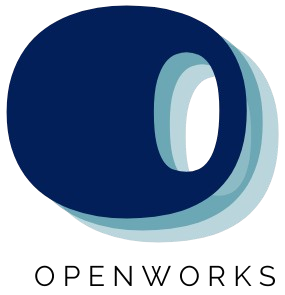In today’s increasingly digital world, the concept of building remote development teams has gained significant traction. With businesses seeking to tap into a global talent pool, the need for effective strategies to assemble and manage these teams has never been more critical. Whether you’re a startup looking to scale quickly or an established enterprise aiming to optimize costs, remote development teams can offer a multitude of benefits.
However, the journey to building a high-performing remote team is not without its challenges. From finding the right talent to ensuring seamless collaboration across different time zones, there are numerous factors to consider. This is where OpenWorks comes in. With our expertise in connecting North American businesses with top-tier Latin American talent, we have perfected the art of assembling agile and skilled remote teams that drive productivity and innovation.
In this comprehensive guide, we will delve into proven strategies and best practices for building remote development teams that not only meet but exceed your business goals. We’ll explore key aspects such as effective communication, cultural fit, and leveraging the latest tools and technologies to enhance team collaboration. By the end of this guide, you’ll be equipped with the knowledge and insights needed to create a remote development team that thrives in today’s competitive landscape.
Ready to transform your approach to building remote development teams? Let’s dive in and explore the strategies that will set you on the path to success.
Advantages of Building Remote Development Teams
Remote development teams offer numerous benefits, including access to a global talent pool, cost savings, and increased flexibility. Companies like Zapier and Toggl have successfully leveraged remote teams to build innovative products. This section will delve into these advantages, supported by data and real-world examples.
One of the most significant advantages of building remote development teams is the ability to tap into a global talent pool. This means companies are not limited by geographical boundaries when searching for the best talent. According to a report by Buffer, 99% of remote workers would like to continue working remotely at least some of the time for the rest of their careers. This indicates a strong preference for remote work among professionals, making it easier for companies to attract top-tier talent.
Access to a Global Talent Pool
Building remote development teams allows companies to access a diverse range of skills and expertise from around the world. This is particularly beneficial for businesses looking to innovate and stay competitive. For example, Zapier, a company known for its automation tools, has successfully built a fully remote team that spans multiple continents. This approach has enabled them to hire the best talent regardless of location, leading to a more dynamic and skilled workforce.
Moreover, companies can benefit from different time zones. With team members working around the clock, projects can progress continuously without delays. This 24/7 productivity can significantly enhance a company’s ability to meet tight deadlines and rapidly iterate on product development.
Cost Savings
Another major advantage of remote development teams is cost savings. By eliminating the need for physical office space, companies can reduce overhead costs significantly. According to a study by Global Workplace Analytics, businesses can save an average of $11,000 per year for every employee who works remotely half of the time. These savings come from reduced expenses in office rent, utilities, and office supplies.
Additionally, remote work can lead to lower employee turnover rates. Employees who have the flexibility to work from home often report higher job satisfaction and are less likely to leave their positions. This can save companies substantial amounts in recruitment and training costs.
Increased Flexibility
Remote development teams offer increased flexibility, which can lead to higher productivity and job satisfaction. Employees can work from environments where they feel most comfortable and productive. This flexibility can also help in accommodating different work-life balance needs, making it easier for employees to manage personal responsibilities alongside their professional duties.
Companies like Toggl, known for its time-tracking software, have embraced remote work to provide their employees with the flexibility to work from anywhere. This approach has not only improved employee satisfaction but also attracted a wider range of talent who value work-life balance.
Furthermore, remote work can lead to more inclusive hiring practices. By removing geographical barriers, companies can hire individuals from diverse backgrounds, including those who may have been excluded from traditional office environments due to disabilities or other constraints.
Competitive Edge
Leveraging remote development teams can provide companies with a competitive edge. By accessing a global talent pool, reducing costs, and offering increased flexibility, businesses can innovate more rapidly and efficiently. This can be particularly advantageous in the fast-paced tech industry, where staying ahead of the curve is crucial.
For instance, Doist, the company behind the popular task management app Todoist, operates with a fully remote team. This model has allowed them to attract top talent from around the world, leading to the development of highly innovative and user-friendly products. Their success demonstrates how remote teams can drive business growth and product excellence.
In conclusion, building remote development teams offers numerous advantages, including access to a global talent pool, cost savings, increased flexibility, and a competitive edge. Companies like Zapier, Toggl, and Doist have shown that embracing remote work can lead to significant business benefits and drive innovation.
Key Strategies for Managing Remote Development Teams
Effective management is crucial for the success of remote development teams. This section will cover key strategies, including clear communication, efficient onboarding, and the use of collaboration tools. Insights from companies like DistantJob and YouTeam will be incorporated to provide practical advice.
Managing remote development teams requires a unique set of strategies to ensure productivity and cohesion. Here are some key strategies to help you manage your remote development team effectively.
1. Clear Communication
Clear and consistent communication is the backbone of any successful remote team. It is essential to establish communication protocols and use the right tools to facilitate seamless interaction. Tools like Slack for instant messaging and Zoom for video conferencing can help maintain regular communication. Regular check-ins and stand-up meetings can also ensure everyone is on the same page.
2. Efficient Onboarding
An efficient onboarding process is vital for integrating new team members into your remote team. This process should include a thorough introduction to the company culture, project requirements, and expectations. According to a study by Glassdoor, great employee onboarding improves employee retention by 82%. Make sure your onboarding plan includes:
- Going through work agreements
- Clarifying role expectations
- Guiding new hires through the company’s vision and mission
- Helping them start with their first project
- Facilitating socialization with other team members
3. Use of Collaboration Tools
Utilizing the right collaboration tools can significantly enhance the efficiency of your remote team. Tools such as GitHub for version control, Trello for project management, and Google Drive for document sharing are essential. These tools help in maintaining transparency and ensuring that all team members have access to the necessary resources.
4. Setting Clear Expectations and Goals
Setting clear expectations and goals is crucial for remote teams. Each team member should understand their responsibilities and what is expected of them. Breaking down tasks into smaller, manageable milestones can help track progress and ensure accountability. Regular performance reviews can also provide valuable feedback and identify areas for improvement.
5. Regular Check-ins and Performance Reviews
Regular check-ins and performance reviews are essential for maintaining team alignment and addressing any issues promptly. These meetings provide an opportunity to discuss progress, roadblocks, and upcoming tasks. They also help in building trust and fostering a sense of connection among team members.
6. Encouraging Work-Life Balance
Encouraging a healthy work-life balance is important for the well-being and productivity of remote team members. Flexible work schedules and clear boundaries between work and personal time can help prevent burnout. According to a study by Dev.to, over 60% of developers experience burnout, highlighting the importance of work-life balance.
7. Building Team Spirit
Building team spirit in a remote environment can be challenging but is essential for team cohesion. Virtual team-building activities, regular social interactions, and recognizing individual contributions can help foster a positive team culture. Companies like Doist have successfully implemented virtual happy hours and online games to keep their remote teams engaged.
By implementing these strategies, you can effectively manage your remote development team and ensure they remain productive, engaged, and aligned with your business goals.
Overcoming Challenges in Remote Development Teams
While remote development teams offer many benefits, they also come with challenges such as time zone differences, cultural barriers, and maintaining team cohesion. This section will explore strategies to overcome these challenges, drawing from insights provided by various industry leaders.
Building remote development teams can be highly rewarding, but it requires a strategic approach to navigate the unique challenges that arise. Here, we delve into some of the most common obstacles and provide actionable solutions to help your team thrive.
Time Zone Differences
One of the most significant challenges in managing remote development teams is dealing with time zone differences. When team members are spread across various regions, coordinating meetings and ensuring real-time collaboration can be difficult. However, there are strategies to mitigate these issues:
- Flexible Scheduling: Allow team members to work flexible hours that overlap at least partially with other team members.
- Asynchronous Communication: Utilize tools like Slack and Trello to facilitate communication that doesn’t require immediate responses.
- Core Hours: Establish core hours when all team members are available for meetings and real-time collaboration.
For example, companies like Zapier have successfully implemented flexible scheduling to accommodate their globally distributed teams, ensuring that projects progress smoothly around the clock.
Cultural Barriers
Cultural differences can impact communication styles, work ethics, and team dynamics. To build a cohesive remote development team, it’s essential to foster an inclusive environment that respects and embraces diversity:
- Cultural Sensitivity Training: Provide training sessions to help team members understand and appreciate different cultural backgrounds.
- Inclusive Communication: Encourage open and respectful communication, where all team members feel valued and heard.
- Team-Building Activities: Organize virtual team-building activities to strengthen relationships and promote a sense of belonging.
According to a study by Harvard Business Review, teams that embrace cultural diversity are more innovative and perform better. Companies like Doist have leveraged cultural diversity to drive creativity and innovation within their remote teams.
Maintaining Team Cohesion
Maintaining a sense of team cohesion is crucial for remote development teams. Without regular face-to-face interactions, team members may feel isolated or disconnected. Here are some strategies to foster a strong team spirit:
- Regular Check-Ins: Schedule regular video calls to discuss progress, address concerns, and build rapport.
- Virtual Social Events: Host virtual happy hours, game nights, or coffee breaks to encourage informal interactions.
- Recognition and Rewards: Acknowledge and celebrate individual and team achievements to boost morale and motivation.
For instance, Buffer has successfully implemented virtual social events to keep their remote teams engaged and connected, leading to higher job satisfaction and productivity.
By addressing these challenges with thoughtful strategies and tools, you can build a high-performing remote development team that thrives despite the obstacles. Explore more on our website www.openworkstalent.com for additional insights and resources on building remote development teams.
Empowering Your Remote Development Team for Future Success
Building remote development teams offers numerous advantages, but it requires thoughtful planning and execution. By leveraging the strategies discussed in this guide, businesses can overcome challenges and unlock the full potential of remote work. From accessing a global talent pool to achieving cost savings and increased flexibility, remote teams can drive significant innovation and growth.
Key takeaways for successfully managing remote development teams include:
- Clear Communication: Establish robust communication protocols and utilize tools like Slack and Zoom to facilitate seamless interaction.
- Efficient Onboarding: Implement comprehensive onboarding processes to integrate new team members effectively and foster a sense of belonging.
- Collaboration Tools: Leverage tools such as GitHub, Trello, and Google Drive to enhance collaboration and maintain transparency.
- Setting Clear Goals: Define clear expectations and goals, and conduct regular performance reviews to provide valuable feedback.
- Encouraging Work-Life Balance: Promote a healthy work-life balance to prevent burnout and maintain high productivity levels.
- Building Team Spirit: Foster team cohesion through virtual team-building activities and regular social interactions.
By implementing these strategies, companies can create a remote development team that is not only productive but also highly engaged and motivated. Remember, the key to success lies in continuous learning and adaptation. Stay informed about the latest trends and tools, and be open to feedback from your team.
Ready to take your remote development team to the next level? Visit www.openworkstalent.com for more insights and resources on building and managing high-performing remote teams. Let’s embrace the future of work together and drive innovation through remote collaboration!



